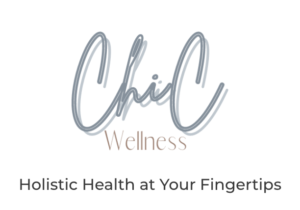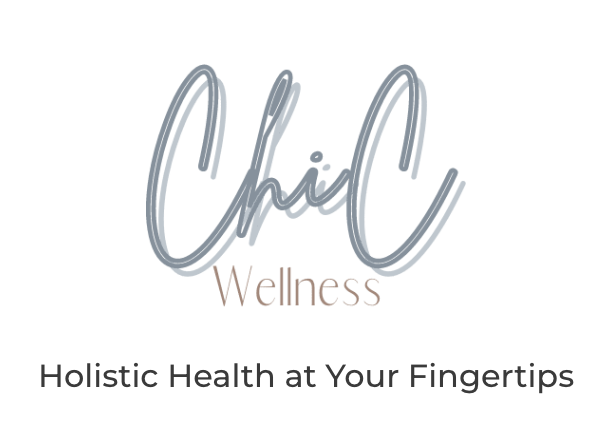Table of Contents
ToggleDo You Always Want To Know What Oriental Medicine Uses?
We’ve all known or met someone who has tried and benefited from Oriental medicine uses or treatment: a schoolchild with asthma, a young mother who felt tired and depressed, a runner with a nagging knee injury, a middle-aged executive with an eating and drinking problem, or a grandmother who has crippling arthritis.
They may be individuals who have no interest in Eastern traditions and have never explored other ostensibly alternative treatments. When their physicians could only provide them with a temporary respite from their chronic illnesses, they resorted to the ancient healing techniques known as Oriental medicine or traditional Chinese medicine—this medical method developed in China two to three thousand years ago and expanded across East Asia. Theorists and practitioners from Japan, Korea, and other nations have contributed ideas and methods to the Chinese culture throughout the ages.

Chinese Medicine is Effective
Because of its long history of use, traditions, faith, popularity, and associated stories, Chinese people believe in TCM. Most Chinese people prefer traditional Chinese medicine to Western medicine because they think TCM has fewer side effects and has a healing impact on the body. However, most TCM techniques have seldom been validated by randomized controlled studies (RCT) in terms of science.
These elements of TCM’s ideas on the human body, health are the essential riddles. Its understanding of illnesses is incomprehensible to contemporary medical thinking. For example, proving the notions of Yin (Negative) and Yang (Positive), Qi (Gas or Energy), and Six Exogenous Pathogenic Factors is challenging (Six Yin).
Five Elements, Chinese 5 – (Zangs) Organs and Chinese 6 – (Fu) Organs, Xue (Blood), Qi (energy) is one of the major systems of thought within Chinese medicine. From a historical perspective it is an important medical theory and serves of what as one of the major diagnostic entryment protocols.
And modern clinical practices the five element theory is used in many degrees depending on their practitioner and style of acupuncture that they practice. For Chinese medicine doctors the theory is used to help create a diagnosis when there is conflicting signs and symptoms.
Chinese medicine is rooted in Qi gong. Qi is the life force that animates all things in the universe. It is invisible and cannot be measured, but it is felt to flow through the body in channels called meridians.
When Qi is blocked or unbalanced, illness can occur. In order to restore balance and health, Chinese practitioners use a variety of techniques, including acupuncture, herbs, massage, and dietary therapy.
Although TCM has been used for centuries in China, there is still a lack of scientific evidence to support many of its claims.
A number of studies have been conducted on specific components of TCM such as acupuncture. TCM works well for many people. Some people may also prefer TCM because it is more affordable than Western medicine.
There are over 11,000 case studies about the efficacy of traditional Chinese medicine on humans, animals and plants. The National Institute of Health in the United States has translated over 2,000 of these case studies into English.
The Chinese medicine journal is a peer-reviewed documentation that are published by doctors of Oriental medicine, practitioners of Traditional Chinese Medicine, and scientists with an interest in Chinese medicine.
The first book on traditional Chinese medicine was published in China over 2,000 years ago. Acupuncture is a healing technique that has been used for centuries to promote well-being and treat illness. Acupuncturists invest hours into studying the science behind their treatments, which they then implement during clinical practice with patients who seek out this form of alternative medicine because it offers relief from chronic pain or other conditions without medication.
What is food therapy
Understanding food and therapeutic properties can save your life and help you reverse a lot of health challenges. The more you know about the subject the better you can make decisions about what works and what doesn’t work for you. Chinese medicine food therapy has been developed and refined and gives food and drink properties that they possess in nature. The properties are founded upon the fundamental principles that are responsible for explaining how food treats and keeps the human body well.
Food therapy is one of the five branches of Oriental medicine. It is used in conjunction with other modalities such as acupuncture, herbs, and massage to treat a variety of health conditions.
Food therapy is based on the principle that food is medicine. What we eat affects our body, mind, and spirit. In Chinese medicine, food is classified into five flavors: sweet, sour, bitter, pungent, and salty. Each flavor has its own properties and benefits.
Food properties include temperature and their effect on digestion. For example hot foods like peppers ginger cinnamon and mustard are good for cold constitutions.
Food therapy is also divided into flavors like sweet sour bitter and pungent as mentioned above salty foods have an effect on the kidney and the urinary bladder and moistens dryness in the body which also helps support digestion and small amounts.
Bitter foods affect the heart and small intestine they also dry the body fluids and help promote bowel movements.
Food properties can change with cooking for example steam foods become cool and cold and nature while roasted stewed or fried foods become hot and warm.
Sweet foods are cooling and moistening. They are good for the stomach and lungs and help to relieve thirst. Sour foods are warming and drying. They are good for the liver and help to relieve constipation. Bitter foods are cooling and drying. They are good for the heart and help to expel phlegm from the lungs. Pungent foods are warming and moistening.
They are good for the kidneys and help to expel toxins from the body. Salty foods are cooling and moistening. They are good for the Spleen and help to calm the emotions.
Food therapy can be used to treat a wide variety of conditions, including:
– Insomnia
– Headache
– Migraine
– Toothache
– Neck pain
– Lower back pain
– Arthritis
– Constipation
– Diarrhea
– Bronchitis
– Sinus infection
– Asthma
– Eczema
What are Herbal Formulas?

Herbal therapy consists of principal formulas divided into categories and sections and treats the root cause of disease. There are over 340 principle formulas. Like all other aspects of Chinese medicine, procedures and strategies undergo constant transformation changes. When prescribing herbal formulas, practitioner study the source in which where the formula came from. For example, the ingredients have used the original name and the dosage of each substance in the formula. And the method of preparation. The method of preparation describes the aspect of preparing the formula. When the standard formula of decoction is used, special instructions are provided when there is a significant difference between the original ingredients dosage or method of preparation, then those are used and are noted for further prescriptions. The actions of the herbs are also considered when prescribing herbal formulas.
Indications of each herb provide the practitioner with information drawn from the source taxed or later interpretation that corresponds to mainstream contemporary uses of herbal formulas in the modern day. So as you can tell, there is a lot of information about prescribing herbal formulas. I also like to note on the analysis of the procedure. The study of a formula discusses a make-up other formula. This is why Chinese medicine doctors chose particular substances to treat the disorders from which the formula is indicated years ago. Other areas that are considered and also studied are the contraindications and the commentary of the formulas, the comparisons of formulas, the biomedical indications, their alternative names, modifications, variations, and other associated formulas.
Mainstream Medicine
Medicine is silent about many of the diseases that people suffer from. They are often treated with medications and surgeries, but these do not work for everyone who has them because they don’t recognize their symptoms as being related in any way to an illness or infection – this includes things like pain, tiredness/ weakness , digestive difficulties etcetera
Many individuals have had trouble getting relief even when looking into conventional medical practices; some may think it’s just complaints until there’re more severe side-effects than before (such although many doctors provide great (often disregarded) advice on prevention and wellness, the primary emphasis of mainstream medicine remains illness treatment, not health maintenance.
The kinds of diseases that our medical system is wonderfully prepared to treat—the finest in the world. No ethical practitioner of an alternative therapy would propose to treat someone for such issues if they were not simultaneously getting care from mainstream medicine unless treatment had been attempted but the side effects or consequences were unacceptable to the patient. Alternative or traditional medicine is appropriate in certain situations as a supplementary or supplemental treatment.
Because of its dependence on medicines and surgery, conventional medicine may provide less than stellar outcomes in the treatment of certain chronic diseases. Individuals suffering from long-term complaints such as allergies, psoriasis, PMS, endometriosis, recurrent infections, back problems, or frequent headaches may visit one specialist after another in search of a definitive treatment only to discover that they must rely on medications with potentially harmful side effects. seem to be worse than the illness Most of the time, the current therapy for such issues offers just limited symptom alleviation rather than a cure.
In this way, it is not surprising that an increasing number of people are turning to complementary and alternative medicine (CAM) for relief from various health problems. CAM therapies encompass a wide range of treatments and approaches, including herbalism, acupuncture, yoga, and meditation. Unlike mainstream medicine, which relies on scientific evidence to support its treatments, CAM therapies often rely on tradition, personal experience, or intuition. Some CAM therapies may be effective in relieving symptoms; others are unproven or may even be harmful.
Despite the lack of scientific evidence supporting many CAM therapies, their popularity continues to grow. One reason for this may be that CAM therapies offer patients a more holistic approach to healing. In contrast to the focus on treating specific symptoms
In this blog post, we talked about the five branches of Chinese medicine and how they can be used to restore our wellness. We also discussed herbal formulas and how they are an important part of restoring our health. If you want to learn more about Chinese medicine or book a virtual consultation, please visit our website. Our team of experts is waiting to help you achieve whole health holistically.

Antonika is a USCG Veteran, Author, speaker, and consultant. She is committed to the influencing and establishing Integrative Medicine practices in every home. She has years of experience with mentorship from over 25 leaders in the field of Integrative Medicine.
East Asian Medicine is an extremely powerful yet simple health practice that aims to “balance you and restore your health’. Antonika says, ‘The fastest growing industry in healthcare today is East Asian Holistic Practices”.
DISCLAIMER
This Information provided by AntonikaChanel LLC on Antonikachanel.com is for general informational purposes only. Everything material on the Site is supplied “entirely”. We make no representations or warranty of any sort, regarding the adequacy or completeness of the content. This website is under no responsibility for any loss or damage arising from the use of this site or reliance on any information provided on the site.


